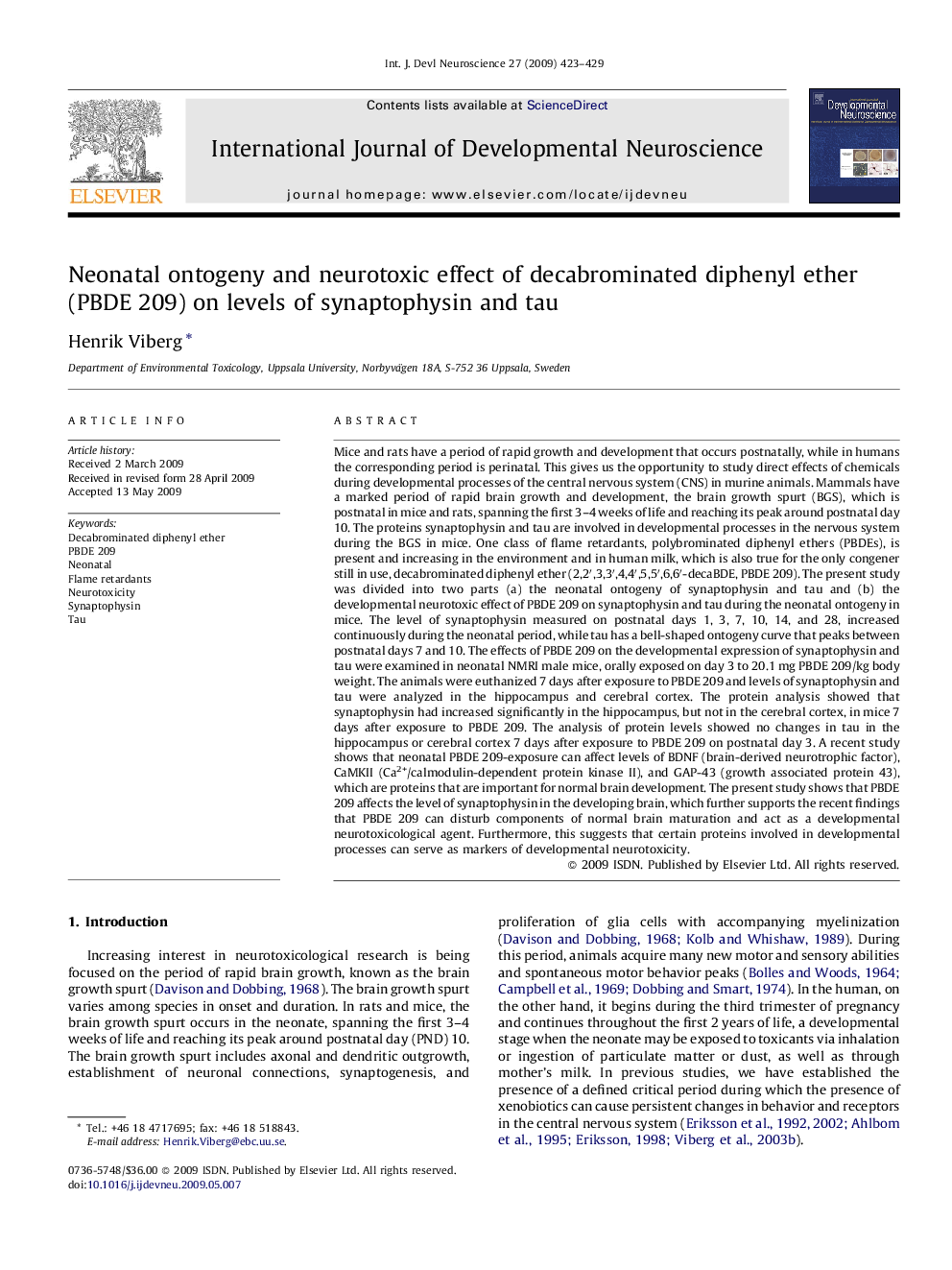| کد مقاله | کد نشریه | سال انتشار | مقاله انگلیسی | نسخه تمام متن |
|---|---|---|---|---|
| 2786946 | 1568435 | 2009 | 7 صفحه PDF | دانلود رایگان |

Mice and rats have a period of rapid growth and development that occurs postnatally, while in humans the corresponding period is perinatal. This gives us the opportunity to study direct effects of chemicals during developmental processes of the central nervous system (CNS) in murine animals. Mammals have a marked period of rapid brain growth and development, the brain growth spurt (BGS), which is postnatal in mice and rats, spanning the first 3–4 weeks of life and reaching its peak around postnatal day 10. The proteins synaptophysin and tau are involved in developmental processes in the nervous system during the BGS in mice. One class of flame retardants, polybrominated diphenyl ethers (PBDEs), is present and increasing in the environment and in human milk, which is also true for the only congener still in use, decabrominated diphenyl ether (2,2′,3,3′,4,4′,5,5′,6,6′-decaBDE, PBDE 209). The present study was divided into two parts (a) the neonatal ontogeny of synaptophysin and tau and (b) the developmental neurotoxic effect of PBDE 209 on synaptophysin and tau during the neonatal ontogeny in mice. The level of synaptophysin measured on postnatal days 1, 3, 7, 10, 14, and 28, increased continuously during the neonatal period, while tau has a bell-shaped ontogeny curve that peaks between postnatal days 7 and 10. The effects of PBDE 209 on the developmental expression of synaptophysin and tau were examined in neonatal NMRI male mice, orally exposed on day 3 to 20.1 mg PBDE 209/kg body weight. The animals were euthanized 7 days after exposure to PBDE 209 and levels of synaptophysin and tau were analyzed in the hippocampus and cerebral cortex. The protein analysis showed that synaptophysin had increased significantly in the hippocampus, but not in the cerebral cortex, in mice 7 days after exposure to PBDE 209. The analysis of protein levels showed no changes in tau in the hippocampus or cerebral cortex 7 days after exposure to PBDE 209 on postnatal day 3. A recent study shows that neonatal PBDE 209-exposure can affect levels of BDNF (brain-derived neurotrophic factor), CaMKII (Ca2+/calmodulin-dependent protein kinase II), and GAP-43 (growth associated protein 43), which are proteins that are important for normal brain development. The present study shows that PBDE 209 affects the level of synaptophysin in the developing brain, which further supports the recent findings that PBDE 209 can disturb components of normal brain maturation and act as a developmental neurotoxicological agent. Furthermore, this suggests that certain proteins involved in developmental processes can serve as markers of developmental neurotoxicity.
Journal: International Journal of Developmental Neuroscience - Volume 27, Issue 5, August 2009, Pages 423–429